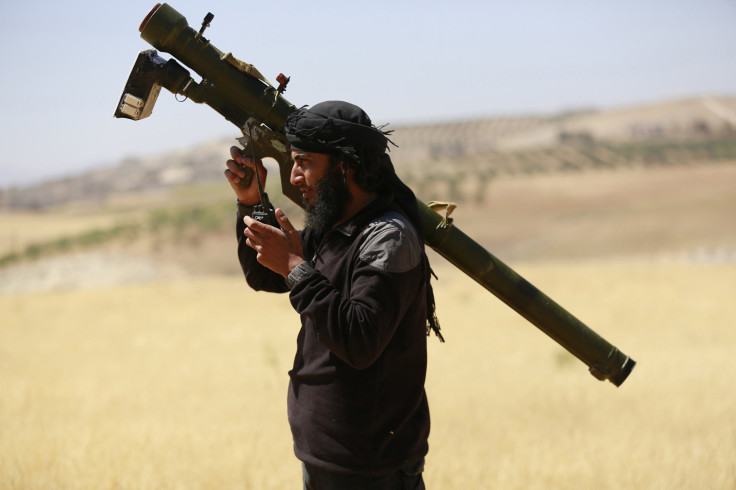What Is Nusra Front? Al Qaeda's Affiliate In Syria Is Also Getting Hit By US Airstrikes

The U.S. began its air campaign in Syria meant to “degrade and destroy” the Islamic State group late Monday, but the Sunni extremist group is not the only U.S. enemy on the ground. Jabhat al-Nusra, one of al Qaeda’s branches in Syria, is also reportedly being hit by airstrikes from the U.S. and its allies in the region. At least 50 fighters for the group, also known as Nusra Front, were killed overnight, according to Reuters.
Jabhat al-Nusra has played many roles in the more than three-year civil war that has rocked Syria. Originally, many of the fighters in the group were lumped in on the rebel side of the war with others fighting Syrian President Bashar Assad. As the situation on the ground became increasingly fractionalized, Jabhat al-Nusra began warring with the more “moderate rebels,” the Free Syrian Army. If that weren't complicated enough, it then split from longtime partner and former al Qaeda affiliate, the militant group formerly known as the Islamic State of Iraq and Syria, also known as ISIL or ISIS. Nusra Front has 10,000 fewer fighters than Islamic State.
Where did Nusra Front come from?
ISIS and the Nusra Front share family ties. Both groups descend from al Qaeda in Iraq, which sent militants to Syria to create Nusra Front in January 2012. The group quickly made gains across Syria and Lebanon working alongside ISIS. By the end of that year, the U.S. and several other Western countries had declared it a terrorist organization. In March 2013, al Qaeda released a statement stating it was no longer affiliated with ISIS, and that Jabhat al-Nusra would now be its official branch in Syria. By that point, clashes between the two groups had already resulted in the death of 3,000 people. The group ultimately split after a suggestion from the head of one of Syria’s most secretive militant groups, Khrorasan.
But ISIS and the Nusra Front might have had a recent reconciliation. This summer, the Lebanese military reportedly arrested a Jabhat al-Nusra leader, Emad Jumaa, who said the militant groups were coordinating on attacks on the Lebanese border.
Where is Nusra Front?
The Nusra Front has strongholds sprinkled around the Syrian map, but most recently declared itself an “emirate” in the besieged parts of Aleppo, the largest city in Syria. One of its bigger bases is in the Golan Heights, on the border with Israel. Nusra militants kidnapped 45 U.N. peacekeepers in the Golan three weeks ago, whom they later released. The group has also reportedly seized a United Nations weapons store and U.N. uniforms and vehicles.
It has bases in Raqqa, the so-called capital of the Islamic State. Nusra originally seized the 17th division Syrian army base in Raqqa from regime forces in March 2013, but ISIS took control at the end of July.
What does the group want?
The Nusra Front is largely made up of Sunni extremists and aims to establish a caliphate under Sharia Law spanning across the region. It also wants to overthrow the Assad regime. The group has established governing systems across its territories, including Islamic courts, and provide basic life necessities such as electricity, food and water.
If it isn't as bad as ISIS, why is the U.S. bombing Nusra Front?
The Nusra Front is still a branch of al Qaeda, a terrorist organization that has threatened large-scale attacks on the U.S. for decades. Most recently, the group has been accused of providing cover for Khorasan, which could be planning attacks on U.S. soil, according to the Obama administration. The goal in Syria is to find Western passport holders able to board international flights and detonate bombs.
© Copyright IBTimes 2024. All rights reserved.












